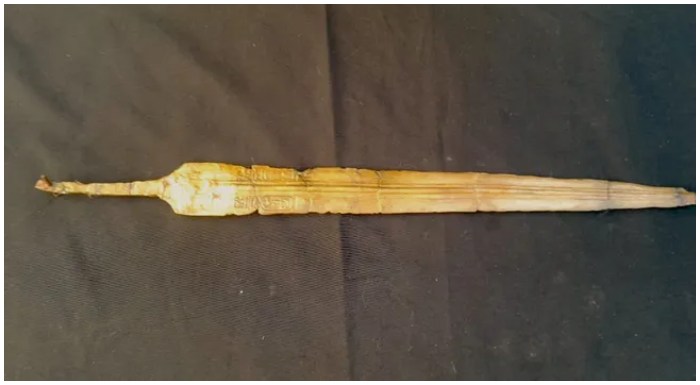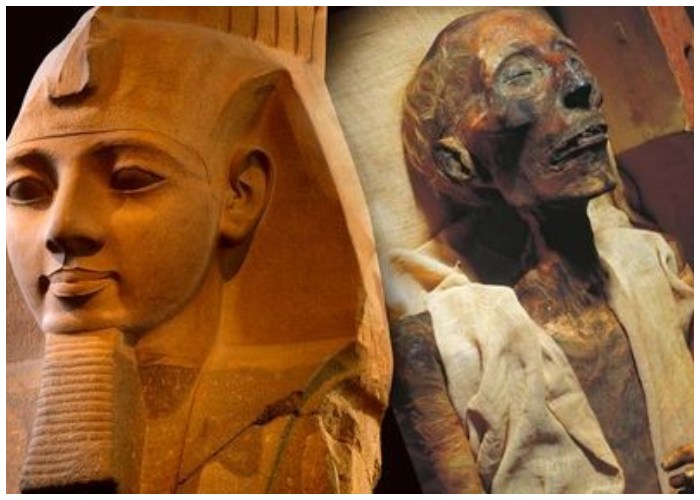Archaeologists in Egypt have recently uncovered the remains of a 3,200-year-old military barracks dating back to the reign of King Ramesses II. This discovery, filled with artifacts including weaponry and inscribed limestone blocks, sheds new light on ancient Egypt’s military strategies. Found in the northwest Nile Delta, this structure offers clues about how Egypt protected its borders from potential threats. The unearthed items, especially a sword bearing the name of Ramesses II, reveal the importance of this outpost and the role it played during a time when Egypt faced increasing external threats.
A Rich Array of Artifacts
The barracks revealed a wealth of intriguing artifacts that provide insight into the daily operations and military logistics of the time. Among the most striking finds is a bronze sword inscribed with hieroglyphs depicting the name of King Ramesses II. This sword, discovered near an entry point where enemies could infiltrate, was not merely a decorative item but a functional weapon, likely used in combat. The discovery of such weaponry indicates that the barracks were not just a shelter for soldiers but a fortified base ready for battle.
Additionally, archaeologists found storerooms filled with pottery, which contained the remains of animals, including fish and cows. The discovery of multiple cow burials has sparked interest due to the symbolic meaning of cows in ancient Egypt. Known as symbols of strength and prosperity, cows were often revered. However, in this case, evidence suggests the cows were used for food, with bones discovered in a silo near ovens, indicating they were likely dried and stored for later consumption.

Strategic Importance of the Barracks
The location of the barracks in the northwest Nile Delta was not arbitrary. Positioned along a military road, this site was likely critical in defending Egypt’s borders from threats emanating from the western desert and Mediterranean Sea. The barracks provided a stronghold where soldiers could confront incoming forces, particularly from the Libyans, who historical records suggest were becoming an increasing threat to Egypt during this period.
The significance of the site is further highlighted by the discovery of two inscribed limestone blocks. One of these blocks mentions King Ramesses II, reinforcing the connection to his reign, while the other references an official named “Bay.” These inscriptions, alongside the weaponry found at the site, suggest that this military post was well-armed and possibly played a role in producing or maintaining weaponry. The inclusion of Ramesses II’s name on the sword and other objects reflects the king’s power and influence, reinforcing the loyalty of high-ranking officers through such prestigious gifts.
A Glimpse into Ramesses II’s Military Strategy
The discovery of the barracks and the artifacts within offers valuable insights into the logistics and military strategies of Egypt under Ramesses II. According to Peter Brand, a history professor from the University of Memphis, this find is crucial in understanding how the military operated during this era. Other forts and military installations have been uncovered in northwest Egypt, but none as well-preserved as this one. The barracks likely served not only as a defensive structure but also as a logistical hub, potentially producing weapons on-site, ensuring that soldiers stationed there were always prepared for conflict.
The discovery also aligns with textual accounts that suggest growing external threats during Ramesses II’s reign, particularly from the Libyans. According to Anthony Spalinger, a professor of classics and ancient history at the University of Auckland, this fortification was meant to control access to Egypt and prevent invasions from the west. The sword found at the site, bearing the king’s name, not only served a functional purpose but also symbolized the king’s wealth, power, and the loyalty he commanded from his officers.

Ramesses II’s Legacy in Defense and Power
The uncovering of this 3,200-year-old military barracks is a remarkable window into ancient Egypt’s military organization and its defensive strategies under King Ramesses II. The discovery of weapons, food storage, and inscribed artifacts not only provides insight into how the Egyptians prepared for battle but also highlights the strategic importance of this site in protecting Egypt’s borders from external threats. As archaeologists continue to study the site, it promises to offer even more revelations about the might of Egypt’s military during one of its most storied reigns. This discovery serves as a testament to the enduring legacy of Ramesses II and his efforts to safeguard his kingdom from potential invaders.